Many of the essential travel reward perks can be had using credit cards that cost $100 per year, or less. So when does it make sense to graduate to a card that might cost $400, $500 or more? For those who travel often, or who spend large amounts on airfare and dining out, those high fee cards can actually return far more value than they cost up front.
In this post I’ll compare high fee cards with moderate or no fee comparables, with an eye on how much spending and travel activity would justify the fee difference.
In most of these cases, it’s possible to hold more than one card in the same family — the Amex Gold and Platinum cards, for instance — and I’ll discuss briefly if and when it makes sense to double down on rewards cards.

Flying for just taxes and fees in a lavish compartment like Singapore Airlines’ suites is one reason to consider paying a high up-front fee for a lush travel rewards credit card. Image by Singapore Airlines
American Express Family – Gold and Platinum cards
American Express practically invented the concept of credit card travel rewards. Its Membership Rewards program predates just about every other competitor and still offers some of the best returns on travel spending in the business.
Amex is the unsurpassed credit card company when it comes to customer service and purchase protection. I’ve had Amex successfully and painlessly resolve disputes over everything from a pick-pocketed iPhone to IKEA furniture that didn’t fit together as depicted in the instructions.
There are three tiers of cards that earn Membership Rewards transferrable to airline frequent flyer programs: the no-fee Amex EveryDay Credit Card, the Gold Rewards credit card and The Platinum Card.
The Platinum Card from American Express — $550 annual fee
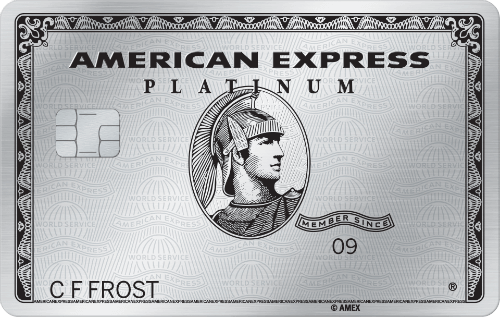
The Platinum Card from American Express.
The Platinum Card is still regarded by many as the ultimate travel rewards card. It’s also a luxury item and status symbol. The card itself is not plastic, but instead a heavy chunk of silver metal upon which your name is embossed like a statue placard.
For heavy travelers, even the $550 (See Rates & Fees) whopper of an annual fee can make financial and logistical sense.
The list of added perks is long, so I’ll dive into a straight rundown.
- Complimentary access to Amex Centurion Lounges at airports.
- Complimentary access to Delta Sky Clubs when flying Delta Air Lines.
- Complimentary Priority Pass lounge membership.
- Access to American Express’ Concierge Service (basically a secretary who can book trips on your behalf and even fix nasty business problems with things like flowers and fruit baskets).
- Five Membership Rewards points earned for every dollar spent on airfare with airlines or Amex travel.
- $200 in airline fee credit.
- $200 in credit to use with Uber, at a rate of up to $15 per month or $20 in December.
- Uber VIP Status.
- $100 credit to be used every four years to cover TSA PreCheck or Global Entry membership.
- $100 in credit to use at Saks Fifth Avenue.
- Waived fee for additional Gold Card membership.
This is by no means an exhaustive list, and Platinum Cardholders also enjoy upgraded versions of many of the coverage and benefits that come with the EveryDay and Premier Rewards Gold credit cards.
If you take full advantage of many of these credits, the $550 fee can be offset faster than the fee on the Gold card.
Strictly on the basis of bonus points earned through the card, this card breaks even for anyone who spends more than $9,200 an airfare with an airline.
If you factor in the $200 in easy-to-use airline and Uber credits, though, that break-even points comes down to $2,500.
For any heavy business traveler, international traveler or big spender, The Platinum Card can make life a whole lot easier. The card often comes with high introductory bonuses that can offset the sign-up cost, as well.
- Earn 35,000 Membership Rewards® points after you spend $4,000 on eligible purchases with your new Card within the first 3 months.
- Earn 4X Membership Rewards® Points on Restaurants worldwide, including takeout and delivery.
- Earn 4X Membership Rewards® points at U.S. supermarkets (on up to $25,000 per calendar year in purchases, then 1X).
- Earn 3X Membership Rewards® points on flights booked directly with airlines or on amextravel.com.
- $120 Dining Credit: Earn up to a total of $10 in statement credits monthly when you pay with the Gold Card at Grubhub, Seamless, The Cheesecake Factory, Ruth’s Chris Steak House, Boxed, and participating Shake Shack locations. This can be an annual savings of up to $120. Enrollment required.
- $100 Airline Fee Credit: up to $100 in statement credits per calendar year for incidental fees at one selected qualifying airline.
- No Foreign Transaction Fees.
- Annual Fee is $250.
- Terms Apply.
- See Rates & Fees
Holding Multiple Cards?
The American Express Gold Card and Amex EveryDay cards both offer spending bonuses that differ from the top-flight Platinum Card.
Chase Ultimate Rewards Cards
Of late, Chase has been giving American Express a run for its money. The Chase Sapphire Reserve card drew hoards of blogger attention when it offered a record 100,000 point introductory bonus upon launch. As a result, the card quickly became an endemic species at trendy bars and restaurants.
That bonus has since come down. Chase offers a fantastic travel rewards program available across a wide variety of cards, however, starting with two no-fee cards.
Chase Freedom and Chase Freedom Unlimited – No Fee
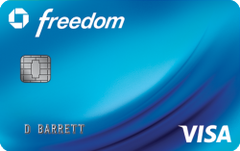
The Chase Freedom card comes with a nice suite of protection benefits and five-times points earning in rotating bonus categories.
The Chase Freedom was my very first credit card. I still keep it in my wallet for one major reason: five-point earning on special revolving bonus categories. Past categories have included everything from restaurant spending to purchases at gas stations, Walmart and amazon.com.
The Chase Freedom Unlimited offers an unusual 50-percent earning bonus on every purchase made. Some card junkies have added the card to their wallet just to earn the extra half-point bonus on purchase categories that aren’t covered by other cards they hold.
While both Freedom Cards accumulate points through Chase’s valuable Ultimate Rewards program, the points cannot be transferred to any of Chase’s 12 airline and hotel partners. The points can, however, be transferred to another Chase account under the same name, so many will pair their no-fee Freedom card with a Sapphire card to take advantage of those bonus categories.
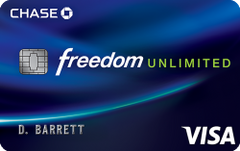
The unique Chase Freedom Unlimited offers an extra 50 percent boost on points earning across all spending.
The Freedom card also comes with an impressive host of protection benefits for a no-fee option.
- Trip Cancellation Protection
- Secondary Rental Car Insurance (a back-up to the primary that the rental company sells)
- Travel Accident Protection
- Purchase Protection
- Price Protection
- Luggage Protection
Click here to access more info these and similar cards.
Chase Sapphire Preferred — $95 fee (waived first year)

The classic Chase Sapphire Preferred card.
The Sapphire Preferred was Chase’s first entry into the travel rewards card space. The heavy, opalescent blue cards are easy to recognize and look fantastic when presented on a table. For a modest $95 fee card, the Sapphire Preferred screams premium.
Sapphire Preferred holders earn double points on travel and dining purchases and can transfer their points directly to Chase’s cadre of airline and hotel partners, including exclusive ones like United and Southwest airlines.
When converting the points to airfare cash, Preferred cardmembers get a 25 percent bonus on the redemption value over Freedom cardholders.
The Sapphire Preferred card also comes with a concierge service and all of the travel insurance, rental car and damage/loss protection that the standard Freedom card includes, plus Primary Car Rental Insurance which effectively eliminates the need to pay up for rental car insurance when you rent a car.
Valuing Chase Ultimate Rewards points at 1.5 cents per point — which is exactly what they are guaranteed to be worth when transferred to Southwest Airlines — anyone who spends over $3,300 per year on travel and dining will easily break even on the fee.
Neither the Sapphire Preferred or Reserve cards incur foreign transaction fees.
Click here to access more on this and similar cards.
Chase Sapphire Reserve — $450 fee
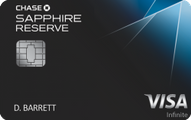
Black Metal: The Chase Sapphire Reserve card.
The Sapphire Reserve is largely read as an attempt to dethrone Amex’s Platinum Card, and offers many similar benefits and thick, black metal.
Reserve cardholders earn three-times points on travel expenses and dining expenses. While this isn’t as generous as Amex’s five-time airfare bonus, Chase’s travel category is cavernously broad, encompassing everything from flights and hotels to subway, rail, taxi and ridesharing purchases. I earn three Chase Ultimate Rewards points on every dollar I spend on my local transit commuting habits.
Chase also doles out a generous $300 travel credit, applied to the same categories covered under travel credit earning. Unlike Amex’s $200 credit, for which cardholders have to designate an airline, Chase’s travel credit applies to travel purchases universally and is automatically deducted from the card statement. I typically accumulate the $300 benefit within the first month of card renewal, effectively offsetting much of the $450 card fee.
Reserve cardholder also enjoy an even higher bonus when converting the points to cash to pay for flights and hotels through the Ultimate Rewards Travel Portal.
Luxury travel perks included with this card include:
- Complimentary Priority Pass lounge access
- $100 credit to cover TSA PreCheck or Global Entry membership
- Extended Warranty program
- Enhanced concierge services, purchase protection and travel assistance and insurance.
Interestingly, because of the travel credit and additional bonus point earned on all travel and expenses, the Reserve and Preferred cards break even at about the same spend level. Anyone spending over $3,300 per year on travel or dining expenses will recuperate the Reserve annual fee in the form of Chase Ultimate Rewards points and other credits.
This coming year Chase will no longer offer points earning the $300 that is credited back under the travel benefit, which cuts into that figure slightly, though not significantly.
For heavy travelers likely to soak up that $300 travel credit quickly and take advantage of a few Priority Pass lounges, the $450 Sapphire Reserve card makes a lot of sense.
Click here to access more on this card and others like it.
Holding Multiple Cards?
It makes a lot of sense to pair a Freedom or Freedom Unlimited card with one of the Sapphire cards. The bonus category earning on the Freedom and extra half-point boost on the Unlimited are unique, can be combined with the heavy hitting Sapphire cards and transferred to airlines and hotels.
Since Reserve mostly duplicates and enhances the Preferred card benefits, it only really makes sense to hold both for the purposes of expanding bonus earnings temporarily. Based on the increased points earning and redemption values with the Reserve, I overwhelmingly recommend it above all other similar travel cards.
Click here to access more on this card and others like it.
Citi ThankYou Rewards Cards
Citigroup actually beat Chase to the premium credit card market, launching the Citi Prestige card in 20XX to compete with Amex’s Platinum Card.
With a fee of $450, the Prestige offered may similar benefits including access to American Airlines’ Admirals Clubs, however some perks have since rolled back and rumors have circulated that Citi may stop issuing new Prestige cards in the future.
The Prestige sits atop a similar lineup of cards, however, all tied into Citi’s unique and very flexible ThankYou Rewards program. Citi partners with quite a few interesting airline partners that neither American Express nor Chase cardholders have access too, including Jet Airways JetPrivilege, Turkish Airlines Miles and Smiles and Qantas Frequent Flyer.
Citi ThankYou Preferred Card – No fee
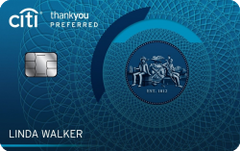
The Citi ThankYou Preferred card.
Citi’s no-fee card comes with access to some, but not all of Citi’s ThankYou Rewards travel perks. Points can be transferred to JetBlue Airways, or used to pay for travel through Citi’s travel portal at a rate of 1¢ per point.
Preferred cardholders earn two ThankYou points per dollar spent on dining and travel categories and one point per dollar on everything else.
The Citi ThankYou Preferred includes basic travel accident insurance, secondary auto rental insurance, lost luggage reimbursement, trip cancellation insurance, price protection and purchase protection.
For a no-fee travel card, the perks are impressive, though it’s necessary to step up a notch if you want to transfer points to most of Citi’s airline and hotel partners.
Citi ThankYou Premier Card – $95 (waived first year)

The Citi ThankYou Premier card offers great earning bonuses for a $95 card.
For a $95 card, ThankYou premier offers unparalleled points earning. Cardholders earn three points per dollar spent on travel and gas stations and double points on dining and entertainment categories. That is an exceptionally broad swath of bonus earning categories.
Premier cardholders have 15 airline frequent flyer programs they can transfer points to, and Citi often offers transfer bonuses on airline programs like Air France Flying Blue and Virgin Atlantic Flying Club.
Premier comes with most of the same travel perks as the Preferred card and allows travelers to make international purchases without incurring foreign transaction fees. Unlike Chase Sapphire Preferred, Citi ThankYou Premier comes with secondary — not primary — rental car coverage.
For the sake of this comparison, I will also count Citi ThankYou points at 1.5¢ per point, although some would argue that increased transfer times to some Citi partners makes the points less flexible and in turn less valuable.
With 3x earning on travel and gas, however, it’s easy to break even on this card: $2,200 of spend in either of these categories will pay off at the 1.5¢ per point rate.
Citi ThankYou Prestige Card — $450
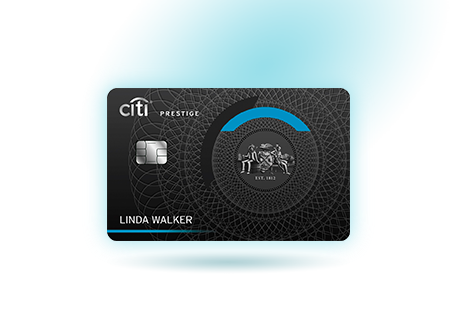
The Citi Prestige card has seen cutbacks, but still sits firmly among its competitors in the $450-per-year travel card category.
Citi’s top-flight Prestige was once second to Amex Platinum in terms of perks. It has since fallen, as Citi ended its relationship with American Airlines Admirals Clubs, leaving Prestige cardholders with the same Priority Pass benefit that Chase Sapphire Reserve cardholders enjoy.
There are some unique perks that come with prestige. Every fourth hotel night booked through the ThankYou Travel Portal is free — and those hotel stays are still eligible for triple points earning. The earning profile is slightly different than Citi Premier. Prestige cardholders earn triple points on travel and hotels, but not gas, and double points on dining and entertainment.
Similar to its competitors, the Prestige card includes a $250 travel credit that applies automatically, helping offset the fee. Citi also operates a luxury concierge for Prestige cardholders.
Other benefits include $75,000 in rental car coverage and an extension of the price rewind and loss and damage protection also included with the Premier card.
Like Chase, Citi has recently scaled back some of its price protection, car insurance and loss and damage protection benefits.
Holding Multiple Cards?
Those who spend enough on gas to recuperate the extra two bonus points per dollar earned on the Premier Card (at least $3,150) could make sense out of holding both the Prestige and the Premier card. Otherwise, it doesn’t do much good to hold onto Citi’s Premier and Prestige cards at the same time, as Citi doesn’t wave fees on the Premier.
Upshot
I’ve had friends question the high-fee cards that I carry. It’s not what the size of the fee that matters, ultimately, its how you use the card!
I enjoyed the massive early sign-up bonus on my Chase Sapphire Reserve card back in August 2016. It propelled my points and miles habit to where it is now! Even after collecting the bonus, I haven’t second-guessed renewing the card. I still return more than enough value in a year to cover the fee and enjoy many, many more rewards.
The responses below are not provided or commissioned by the bank advertiser. Responses have not been reviewed, approved or otherwise endorsed by the bank advertiser. It is not the bank advertiser's responsibility to ensure all posts and/or questions are answered.